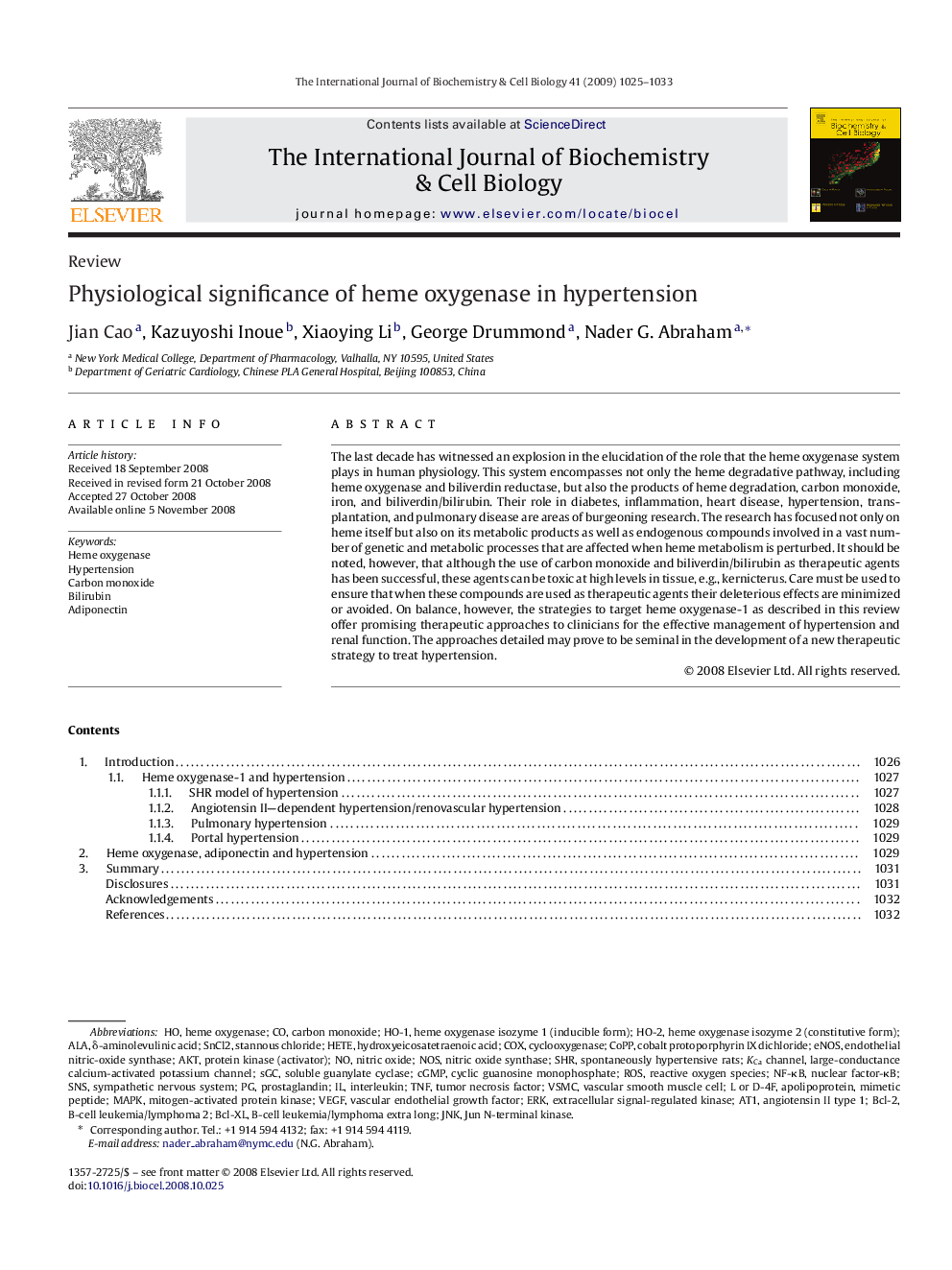| کد مقاله | کد نشریه | سال انتشار | مقاله انگلیسی | نسخه تمام متن |
|---|---|---|---|---|
| 1985089 | 1539953 | 2009 | 9 صفحه PDF | دانلود رایگان |

The last decade has witnessed an explosion in the elucidation of the role that the heme oxygenase system plays in human physiology. This system encompasses not only the heme degradative pathway, including heme oxygenase and biliverdin reductase, but also the products of heme degradation, carbon monoxide, iron, and biliverdin/bilirubin. Their role in diabetes, inflammation, heart disease, hypertension, transplantation, and pulmonary disease are areas of burgeoning research. The research has focused not only on heme itself but also on its metabolic products as well as endogenous compounds involved in a vast number of genetic and metabolic processes that are affected when heme metabolism is perturbed. It should be noted, however, that although the use of carbon monoxide and biliverdin/bilirubin as therapeutic agents has been successful, these agents can be toxic at high levels in tissue, e.g., kernicterus. Care must be used to ensure that when these compounds are used as therapeutic agents their deleterious effects are minimized or avoided. On balance, however, the strategies to target heme oxygenase-1 as described in this review offer promising therapeutic approaches to clinicians for the effective management of hypertension and renal function. The approaches detailed may prove to be seminal in the development of a new therapeutic strategy to treat hypertension.
Journal: The International Journal of Biochemistry & Cell Biology - Volume 41, Issue 5, May 2009, Pages 1025–1033